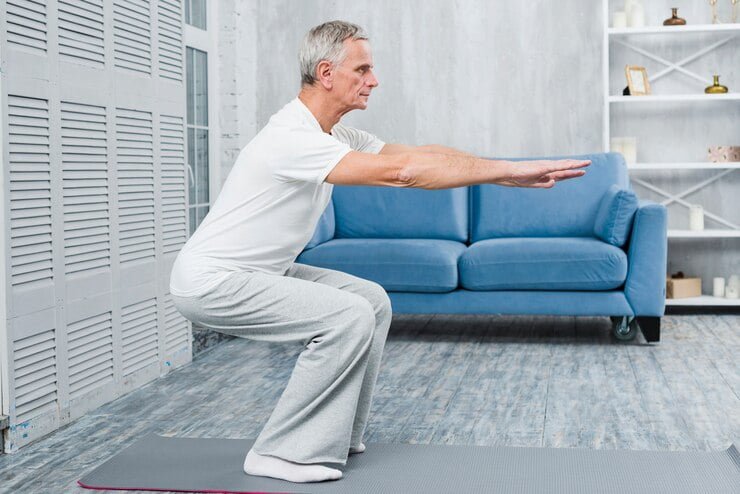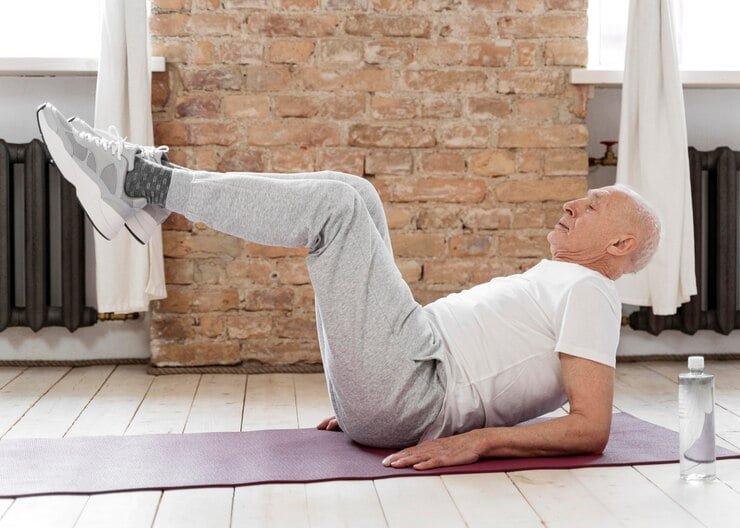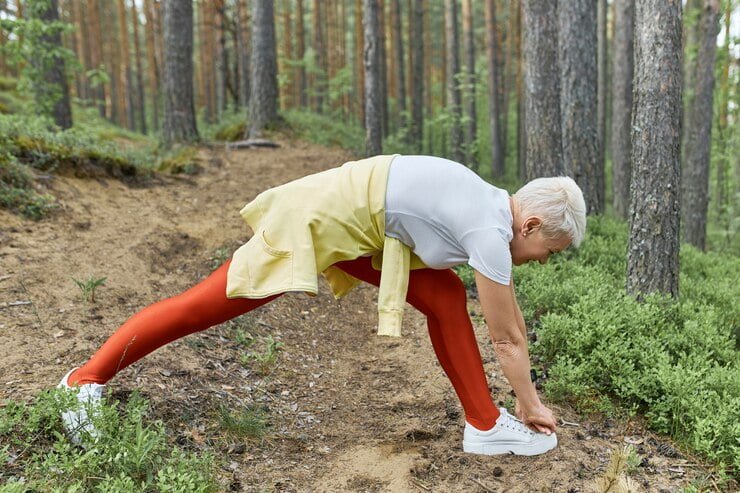
For older adults, maintaining physical activity is essential not just for overall well-being but particularly for the preservation of movement and independence. Leg exercises play an important role in muscle strengthening, balance improvement, and flexibility enhancement. This blog will examine several leg exercises designed for seniors to keep them active and minimize fall risks.
Significance of Leg Exercises for Old People
Regular leg exercises have many advantages including:
Muscle Strength:
Strong muscles provide joint support, reduce pain and enhance stability.
Balance Improvement:
Falls are a major concern among seniors hence balance exercises can prevent these.
Enhanced Circulation:
Physical activities increases blood flow which reduces the risk of blood clots.
Greater Flexibility:
Stretching improves joint mobility making daily activities more comfortable.
Improved Mental Health:
Endorphins released by exercise help relieve stress and improve mood.
Necessary Leg Exercises for the Elderly
Before engaging in any exercise routine, it is necessary to consult with a healthcare professional, especially if one has any pre-existing conditions. Below are some beneficial leg exercises that elderly people can do:

Seated March
How to Perform:
Sit up straight on a firm chair with your feet flat on the ground.
Raise your right knee as high as you comfortably can mimicking a walking motion.
Lower it down then repeat using your left leg.
Do this alternatively for 1-2 minutes at least once or twice in each leg.
Benefits:
It helps improve hip mobility and strengthens thigh muscles
Ankle Circles
How to Perform:
Sit down or lie comfortably,
Lift one foot from the floor drawing circles with your ankle..
Do 10 circles clockwise, next do anti-clockwise 10 times before repeating with other foot.
Benefits:
It enhances ankle’s flexibility while reducing stiffness at the same time
Calf Raises
How to Perform:
Stand behind a chair or wall for support.
Slowly rise up onto your toes, balancing briefly.
Return to the ground slowly.
Do it 10-15 times
Benefits:
It strengthens calf muscles and improves balance
Leg Lifts
How to Perform:
Lie on your back on a mat with legs fully stretched.
Raise one leg off the ground gradually while keeping it straight.
Hold for a few seconds then lower it down again.
Repeat with the other leg.
Aim for 10 reps per leg
Benefits:
Strengthens hip and thigh muscles
Sit-to-Stand
How to Perform:
Sit in a chair with feet flat on the floor.
Lean forward slightly as you stand up slowly and carefully.
Gently sit back down again.
Do this 10-15 times more than once if possible
Benefits:
Strengthens thighs and enhances mobility during functional activities
Side Leg Raises
How to Perform:
Stand beside a wall or chair that can provide support if needed,
Lift one leg out sideways while keeping it straight,
Pause for a moment then return it back down again,
Do this 10 – 15 times each leg often twice or thrice over per set of workout sessions.
Benefits:
Strengthen hip abductors and improve balance

Heel-to-Toe Walk
How to Perform:
Stand upright, then step forward just like you are walking on a rope tied between two trees (tightrope).
Put one foot heel directly before the other’s toe until twenty steps are made in total using this method of walking which started at once;
Benefits :
Improves coordination and balance
Standing Hamstring Curls
How to Perform:
Stand behind a chair (for support)
Bend one knee bringing your heel towards your buttocks;
Then release it going back down;
This should be done about ten to fifteen times per legs too;
Benefits :
Strengthen hamstring and enhance knee flexibility.
Advice on how to exercise safely
Warm-Up First
You should always perform warm-up exercises before working out in order to condition your muscles and joints.
Stay Hydrated:
Drink water before, during and after workouts.
Listen to Your Body:
If you feel any pain or discomfort, stop exercising immediately.
Use Support:
In case of any challenges in maintaining balance, lean on a chair or wall for support.
Start Slow:
Develop the intensity and duration gradually as you realize strength increase and capability extension.
FAQ
What can I do if I have joint pain?
If you have joint pain, it’s crucial that you modify exercises by avoiding certain movements. Stick to low-impact options and ask a physical therapist for personalized recommendations.
How often should I do leg exercises?
Aim to work your legs 3-4 times per week, but let your own comfort level dictate the frequency.
Can these exercises help with arthritis?
Absolutely! Regular physical activity is effective in reducing inflammation around joints thereby improving flexibility. However, one has to obtain professional advice from health care provider before engaging into new exercise routine.
Can these exercises improve balance?
Yeah! For instance, heel-to-toe walk and calf raises are specifically considered balance enhancement activities.
Conclusion
Include leg workouts into your schedule; this will go a long way towards ensuring better overall health status, mobility as well as quality of life. Whether it’s about enhancing stability levels or building muscles or just being active all day long.
All these routines are safe enough for everyone who wants to get some benefits out of such undertaking. Remember that the key is sticking with what works best for you so make sure this becomes part of who you are!
For additional guidance from experts’ point of view consider making an appointment with a physical therapist or personal trainer. They will help you develop an exercise plan that is both effective and safe. Keep fit, stay secure and enjoy the benefits of a healthy lifestyle!